
HIV is Not a Crime: The Case for Ending HIV Criminalization
Outdated Laws Target Black and Queer Lives in Over 30 States, Fueling a Deadly Disease
News | Video
Although most people generally understand what a “safety net” hospital is, the institutions that provide this kind of care are disadvantaged by the fact that there’s no formal definition of their status — a circumstance that can negatively affect everything from gathering fundamental statistics to eligibility for various kinds of state and federal funding. This little-appreciated predicament is just one of the many challenges faced by these health care centers for the poor that were topics of a virtual panel discussion organized by the University of Pennsylvania’s Leonard Davis Institute of Health Economics (LDI).
Entitled “Reimagining a Sustainable Health Care Safety Net,” the event featured four panelists who are top experts in this area of research: Penn Perelman School of Medicine and LDI Senior Fellow Paula Chatterjee, MD, MPH, who studies safety net hospital financing and the effects of care on low-income patients; Dave Chokshi, MD, former Chief Population Health Officer at NYC Health + Hospitals, the country’s largest safety net system; Carladenise Edwards, PhD, former Executive Vice President and Chief Strategy Officer at Henry Ford Health; and Dora Hughes, MD, MPH, Chief Medical Officer at the Center for Medicare and Medicaid Innovation (CMMI) which, for a decade, has been developing new health care payment and service delivery models.
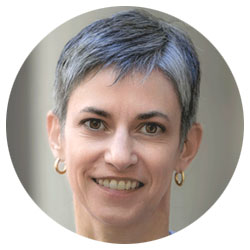
In her opening remarks, panel moderator and LDI Executive Director Rachel M. Werner, MD, PhD, pointed back to the 2000 National Academy of Medicine report titled “America’s Health Care Safety Net: Intact but Endangered.”
“The 2000 report said America’s health care safety net is a patchwork of providers, funding and programs tenuously held together by the power of demonstrated need, community support and political acumen. The safety net has never been particularly safe or secure, but changes in the current health care system, in combination with rising numbers of uninsured, may be placing the nation’s health care safety net at new levels of risk,” Werner recounted.
“Twenty-two years later, as I went back and read that, I was struck by how little has changed,” Werner continued. “In place of worrying about the rising numbers of uninsured, we have a new set of issues that affect the safety net, including uncertain and declining funding, financial strain potentially from the COVID-19 pandemic, and an acute recognition of the chronic problem of a crumbling public health infrastructure.”
The fast-paced LDI panel discussion touched on a number of topics including the undefinable nature of safety net facilities, payment models that undermine operational viability, payment rate differences that disadvantage safety net facilities, the lack of adequate integration of the safety net into the larger national public health care infrastructure, addressing the social needs of safety net patients, the low level of the Centers for Medicare and Medicaid Services’ (CMS) inclusion of equity and safety net issues into the alternative payment models it developed over the last decade, and the ongoing financial and logistical benefits non-safety net hospitals derive from the practice of sequestering a region’s low-income patients in safety net facilities.
Panelists agreed that the heavily balkanized and diffused nature of the current safety net system has so far defied the creation of a formal definition of that system’s institutional participants. This problem is a serious one. For instance, you can’t comprehensively measure and track improvements in an overall system whose parts and functions don’t have universally accepted descriptions. Yet, this inability to establish a safety net facility definition remains a challenge that has stumped even the highest levels of the (CMS), which has a more in-depth understanding of the national health care infrastructure than any other single organization.
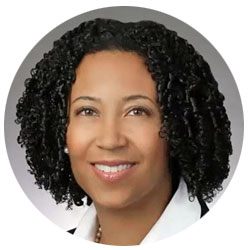
CMMI Chief Medical Officer and panelist Hughes explained that “talking about a ‘definition’ makes me flash back to a meeting we had about a year ago. We thought we should have a unified definition of a safety net provider. There were about 56 people on the Zoom call and right around the time someone presented the 11th definition they found in a peer-reviewed journal, I knew we’d be leaving that meeting without a consensus. It was a demonstration of how difficult it’s been,” she said.
Although not exactly defined, safety net facilities providing outpatient, inpatient, and post-acute care for low-income patients are heavily concentrated, according to Chatterjee. About 80% of care delivery to these low-income patient populations across the country is provided by 20% to 30% of clinicians and health care centers.
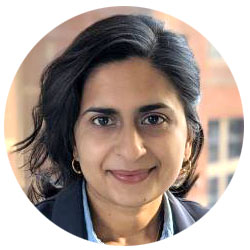
“Often the only source of care available to patients who might otherwise have challenges paying for it, these hospitals provide an essential mission in the U.S. health care system but typically operate under pretty thin financial margins because a lot of the care goes uncompensated,” said Chatterjee.
Ironically, pointed out Edwards, significant numbers of the lower-level employees throughout many of these institutions aren’t paid enough to afford their own health insurance, and, so, are themselves on Medicaid for their care as safety net patients.
Much of the panel session focused on the inadequate safety net payment models and the workarounds—like indigent care pools and the Medicaid Disproportionate Share Hospital (DSH) payment program—that have not solved the overall financial crisis. One key problem is that Medicaid payments for care are lower than what it costs the hospital to provide that care.
“The differential in reimbursement rates has stark consequences and creates problems in the delivery system that creates the Byzantine workarounds we see in our system that try to redress the fact that we don’t have enough money going to the care of certain patients,” said Chokshi. “DSH could be reformed to better target providers that are truly part of the safety net rather than how it’s now spread around to all providers.”
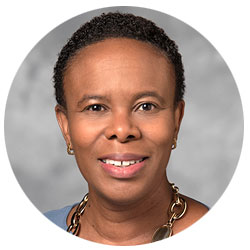
Some alternative payment models, like shared savings programs, are designed to encourage safety net hospitals to be more efficient but have proved frustrating. Edwards explained her experience with them. “One of the challenges of shared savings is it causes you to reduce how much you make and then take half of that and try to do something innovative with it. It seems funny to say ‘I’m going to reduce how much money I make and take half of what I saved and then find a way to innovate with it—when I could have had 100% of the revenue in the first place.’ There has to be something in this reimagination of the safety net that gets us to a more foundational level of sustainability beyond this kind of thing.”
Since its creation in the launch of the Affordable Care Act a decade ago, the Centers for Medicare & Medicaid Services Innovation Center (CMMI) has been engaged in developing new payment models that reimagine health care delivery. But not much of the work has been focused on models for safety net populations, explained Hughes.
“Around 2021, after our first 10 years, it made sense to step back and think about what we learned from the first 10 years that would inform our next 10 and our 2030 goals,” said Hughes. “We learned that in our first 10 years, we didn’t focus on equity enough. We don’t know the impact of our models on equity. And, importantly, we didn’t do a good enough job of serving beneficiaries who are low-income beneficiaries of color or other underserved populations. That really helped contribute to our vision for 2030.”
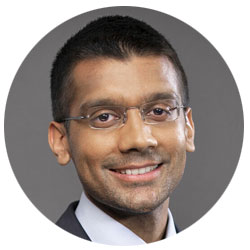
“A key to this,” Hughes continued, “is increasing the number of safety net providers… By more deliberately partnering and bringing them into our models, we will be able to have access to this really critical population.”
Another financial challenge for safety net hospitals is the invisible manner in which benefit the operations of richer, non-safety net hospitals by assuming the financial burden of a region’s low-income care . “Urban safety net hospitals provide a lot of services that are often essential for low-income patients but are often very unprofitable,” said Chatterjee. “That includes things like trauma care, obstetric and neonatal intensive care, and inpatient psychiatric care. These are resource-intensive services with a burden of disease disproportionately high among low-income patients.”
Chokshi, the Former Commissioner of the New York City Department of Health and Mental Hygiene, agreed. “We don’t talk much about how safety net providers provide financial protection to many other actors in the health care ecosystem,” he said. “I won’t mince words. This is an effective subsidy for those other providers. And when we’re looking at part of the ecosystem like non-profit hospitals, we have to keep in mind that this is an effective subsidy on top of the subsidy those nonprofit hospitals already receive by virtue of their tax exemption.”
“When we look at safety net hospital closures over the decades, the evidence suggests that uncompensated care almost totally shifts,” Chokshi continued. “There’s that spillover effect in terms of where that uncompensated care has to go. The safety net providers that exist today are the ones who are providing that financial protection to other parts of the system. So, it’s not just about financial protection, but the public functions that safety net systems provide. We saw this throughout the pandemic. Certainly we did here in New York City with respect to the way that the safety net systems stepped up for COVID testing and the vaccination infrastructure as well.”
“The path we have to forge ahead with is about new kinds of load balancing and recognition of the ways safety net systems already bear different types of loads with uncompensated care and other functions that support public health,” said Chokshi. “This is also about the way in which racial inequities play out in our communities and the need to think about increasing the capacity to redress some of those inequities.”
As Edwards looks out across the U.S. safety net, she sees an even wider potential path. “Right now, our safety net doctors are like firemen standing on the corner with a boot collecting change to try to keep the firehouse open,” she said. “Everybody wants a fire station in their neighborhood, but nobody wants to pay for it. Could you imagine if the firemen said ‘we’re only going to the houses of people who have paid taxes?,’ or ‘we’re not going to save those people who only rent their house or if they’re in a subsidized house? We’re just not going to fully protect those people.'”
“It’s not that we need to reimagine our safety net,” Edwards continued. “We need to reimagine our entire public health infrastructure. We need to take into account that safety net providers need upfront payment. Need risk adjustment. Need enhanced payments for services they provide. And we also need to have the infrastructure for ensuring that everyone, regardless of their ability to pay, can access health care resources that keep all of us healthy and enable us to prevent the spread of disease.”
“What I learned from COVID,” said Edwards, “is that being insured does not prevent you from getting COVID and dying from COVID. Having access to healthy resources, foods and environments that protect you physiologically can reduce the likelihood that you will catch the disease and die from it. To me, that public health infrastructure is equitably as important as enhancing the safety net infrastructure.”

Outdated Laws Target Black and Queer Lives in Over 30 States, Fueling a Deadly Disease

Selected for Current and Future Research in the Science of Amputee Care

Penn LDI Seminar Details How Administrative Barriers, Subsidy Rollbacks, and Work Requirements Will Block Life-Saving Care

Top Experts Warn of Devastating Impact on Community Safety Efforts

A Gathering of a Health Services Research Community Currently Under Siege

1,000+ Detail the Latest Health Services Research Findings and Insights